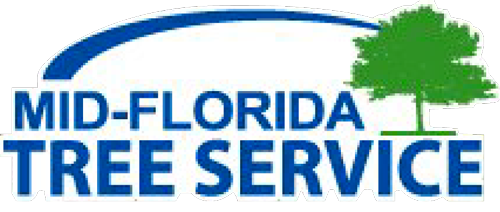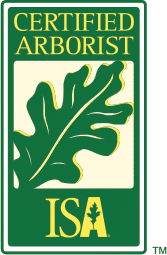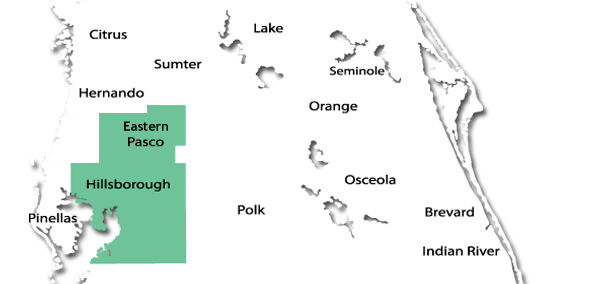How to Spot and Prevent Tree Diseases in Florida
Mid Florida Tree Service • February 8, 2025
Florida’s lush landscapes and warm climate make it an ideal environment for a wide variety of trees. However, the same conditions that promote tree growth also create a breeding ground for numerous tree diseases. Being able to recognize the signs of disease early and taking preventive measures can help preserve the health of your trees and protect the surrounding ecosystem.
Common Tree Diseases in Florida
1. Laurel Wilt Disease
Affects: Redbay, avocado, and other members of the laurel family
Signs: Wilting, leaf discoloration (reddish or purplish), and rapid tree death
Prevention: Avoid transporting firewood, as the disease spreads via the redbay ambrosia beetle.
2. Ganoderma Root Rot
Affects: Palms, including queen, coconut, and areca palms
Signs: Wilting, slow decline, and the presence of conks (hard, shelf-like fungal growths) at the base of the trunk
Prevention: Avoid wounding tree trunks, maintain proper drainage, and remove infected trees promptly.
3. Anthracnose
Affects: Oak, sycamore, and maple trees
Signs: Irregular brown spots on leaves, leaf curling, and premature leaf drop
Prevention: Proper pruning to improve airflow and avoid excessive moisture on leaves.
4. Fusarium Wilt
Affects: Queen palms, royal palms, and other tropical trees
Signs: Yellowing and wilting of fronds, starting with the oldest leaves first
Prevention: Use disease-resistant species and ensure trees are well-fertilized and watered.
5. Lethal Bronzing Disease
Affects: Cabbage palms, date palms, and other susceptible species
Signs: Premature fruit drop, discoloration of fronds (bronze or reddish-brown), and eventual tree death
Prevention: Regular monitoring and removal of infected trees to prevent spread.
How to Prevent Tree Diseases
Routine Inspections
Regularly check trees for changes in foliage, trunk damage, or fungal growth.
Look for early signs of distress, such as wilting, discoloration, or unseasonal leaf drop.
Proper Pruning Techniques
Remove dead or diseased branches to improve airflow and reduce disease spread.
Avoid pruning during wet seasons, as moisture encourages fungal growth.
Soil and Root Care
Ensure trees have well-draining soil to prevent root rot.
Avoid overwatering, which can promote fungal infections.
Use Disease-Resistant Tree Varieties
When planting new trees, opt for species known to be resistant to common Florida tree diseases.
Limit the Spread of Infection
Sanitize pruning tools between uses.
Dispose of infected branches and leaves away from healthy trees.
Avoid transporting firewood from one location to another, as pests and diseases can hitch a ride.
Consult a Certified Arborist
When in doubt, seek professional guidance to assess the health of your trees and implement effective disease management strategies.
Final Thoughts
Keeping trees healthy in Florida requires vigilance, knowledge, and proper care. By recognizing the signs of disease early and adopting preventive measures, you can help ensure that your trees remain strong, vibrant, and disease-free for years to come. If you suspect a tree on your property may be infected, contact Mid Florida Tree Service for expert diagnosis and treatment options.
Planting trees is one of the best ways Florida homeowners can enhance their landscapes while improving air quality, providing shade, and supporting local ecosystems. However, successful tree planting requires careful selection, proper placement, and ongoing maintenance to ensure long-term health. Here are some essential tree planting tips to help homeowners in Florida establish strong, thriving trees. 1. Choose the Right Tree for Your Location Selecting a tree species suited to Florida’s climate and soil conditions is crucial. Native trees such as Live Oak, Bald Cypress, and Southern Magnolia thrive in Florida’s environment with minimal maintenance. Consider factors like sunlight, moisture levels, and space availability before choosing a tree. 2. Select an Ideal Planting Site Proper placement ensures the tree’s longevity and prevents potential issues. When selecting a planting site: Avoid placing trees too close to structures, driveways, or power lines. Choose a location with appropriate sunlight exposure based on the tree species. Ensure adequate spacing from other trees and plants to allow for proper growth. 3. Prepare the Soil Properly Healthy soil is vital for tree growth. Florida’s sandy soil may require soil amendments, such as compost or organic matter, to improve nutrient content and moisture retention. Conducting a soil test can help determine if additional nutrients or pH adjustments are needed. 4. Dig the Correct-Sized Hole Digging a proper hole is key to root establishment. The hole should be: Twice as wide as the tree’s root ball to encourage outward root growth. No deeper than the root ball’s height to prevent sinking and root suffocation. 5. Plant at the Right Depth Planting too deep or too shallow can harm the tree. The top of the root ball should be level with or slightly above the surrounding soil. Avoid covering the trunk base with soil, as this can cause rot and pest issues. 6. Water Properly Newly planted trees need consistent watering, especially in Florida’s hot climate. Follow these watering guidelines: Water deeply but infrequently to encourage deep root growth. Use a slow-drip system or soaker hose to prevent runoff and ensure even absorption. Reduce watering frequency once the tree is established, usually after the first year. 7. Apply Mulch for Moisture Retention Mulching helps retain moisture, regulate soil temperature, and suppress weeds. Use organic mulch like wood chips or pine bark, and apply it in a 2-3 inch layer around the tree base. Keep mulch a few inches away from the trunk to prevent rot and pest infestations. 8. Stake Only If Necessary Most young trees do not require staking unless they are in a windy location or have weak root systems. If staking is needed: Use flexible ties to allow slight movement, promoting stronger roots. Remove stakes after one year to prevent girdling and encourage natural stability. 9. Prune Sparingly in the First Year Minimal pruning is recommended during the first year to avoid stressing the tree. Only remove dead or damaged branches. After establishment, regular pruning will help maintain the tree’s shape and health. 10. Monitor for Pests and Diseases Florida’s warm climate makes trees susceptible to pests and diseases. Regularly inspect your trees for signs of stress, discoloration, or insect infestations. If issues arise, consider using eco-friendly treatments or consulting a professional tree service. Conclusion Proper tree planting and care can lead to a healthy and resilient landscape. By selecting suitable tree species, ensuring correct planting techniques, and providing ongoing maintenance, Florida homeowners can enjoy the benefits of beautiful, strong trees for years to come. For expert advice and professional tree care services, consider contacting Mid Florida Tree Service to help with all your tree planting and maintenance needs.
Florida’s diverse and lush landscape is home to a variety of trees that enhance the beauty of residential properties while providing shade, improving air quality, and supporting local ecosystems. However, proper tree care requires an environmentally conscious approach to ensure the health of trees and the surrounding environment. By adopting sustainable tree care practices, Florida homeowners can maintain thriving landscapes while minimizing negative ecological impacts. 1. Choose Native and Drought-Resistant Trees Planting native tree species, such as Live Oaks, Bald Cypress, and Southern Magnolias, helps create a resilient landscape. Native trees are well-adapted to Florida’s climate, requiring less water and fewer chemical treatments compared to non-native species. Drought-resistant trees also reduce the need for excessive irrigation, conserving water resources. 2. Practice Proper Mulching Mulching around the base of trees retains soil moisture, regulates temperature, and reduces weed competition. Organic mulch, such as wood chips or pine straw, provides nutrients as it decomposes. However, avoid piling mulch directly against the trunk, as this can encourage rot and pest infestations. 3. Use Water-Efficient Irrigation Techniques Overwatering can lead to root rot and weaken trees. Instead, implement deep but infrequent watering to encourage deep root growth. Drip irrigation and soaker hoses are excellent options for delivering water efficiently while reducing runoff and evaporation. 4. Avoid Harmful Chemical Treatments Pesticides and herbicides can harm beneficial insects and disrupt the local ecosystem. Instead, opt for integrated pest management (IPM), which includes natural predators, beneficial fungi, and organic treatments to control pests and diseases in a sustainable way. 5. Prune Thoughtfully and Strategically Regular pruning helps maintain tree health, but excessive trimming can stress the tree. Focus on removing dead or diseased branches, and avoid cutting more than 25% of the tree’s canopy at one time. Sustainable pruning methods also help trees withstand Florida’s frequent storms and high winds. 6. Recycle Yard Waste Rather than disposing of leaves, branches, and tree clippings, use them for composting or as mulch. This reduces landfill waste and returns valuable nutrients to the soil, promoting a healthier landscape. 7. Support Local Wildlife Trees serve as habitats for birds, pollinators, and other wildlife. Consider planting fruit-bearing or flowering trees, such as Red Maples or Dahoon Hollies, to support biodiversity while enhancing your landscape. Leaving some dead wood in less conspicuous areas can also provide shelter for beneficial insects and small animals. 8. Plan for Storm Preparedness Florida’s hurricane season poses risks to trees, making storm preparation a key aspect of sustainable care. Regularly inspect trees for weak limbs, decay, or structural issues. When planting new trees, space them properly and avoid planting too close to buildings or power lines. Conclusion By implementing sustainable tree care practices, Florida homeowners can ensure their trees remain healthy while benefiting the environment. Choosing native species, using eco-friendly maintenance techniques, and preparing for extreme weather are all steps toward a greener and more resilient landscape. Mid Florida Tree Service is committed to providing expert guidance and services to help homeowners maintain beautiful and sustainable tree canopies.
Trees add beauty, shade, and environmental benefits to any property, but they can also become hazards if not properly maintained. Recognizing the signs of a dangerous tree can help prevent property damage, injury, and costly emergencies. Understanding how to identify and address hazardous trees is essential for every property owner. Signs of a Hazardous Tree Certain signs indicate a tree may pose a risk to its surroundings. Here are key warning signs to look for: Leaning Trees – While some trees naturally grow at an angle, a sudden or severe lean may indicate root instability or structural weakness. Cracks and Splits – Deep cracks in the trunk or major limbs can signal internal decay and structural failure. Dead or Hanging Branches – Large, dead branches can break and fall unexpectedly, posing a risk to people and property. Decay and Fungi Growth – Mushrooms or fungal growth at the base of a tree can be a sign of internal decay. Root Damage – Construction, soil compaction, or disease can weaken roots, making trees more likely to topple. Cavities and Hollow Trunks – Large hollow areas can compromise a tree’s stability and strength. Assessing Tree Stability and Risk If you notice any of the above signs, it’s important to assess the severity of the issue. Consider: The location of the tree and what it might fall on (home, driveway, power lines, etc.). The extent of damage or decay present. Weather conditions that may increase the likelihood of failure, such as high winds or heavy rain. Steps to Take if a Tree is a Danger If you suspect a tree is hazardous, take action promptly: Monitor the Tree – If the signs of risk are minimal, keep an eye on it for further deterioration. Prune or Trim Hazardous Branches – Removing dead or weak limbs can reduce the risk of falling debris. Support Weak Trees – In some cases, cabling and bracing can provide additional support to a weakened tree. Consult a Professional Arborist – If you’re unsure about the tree’s condition, a certified arborist can assess and recommend the best course of action. Remove the Tree if Necessary – If a tree is beyond saving and poses a significant threat, professional tree removal may be the safest option. The Importance of Professional Assessment A certified arborist has the expertise to properly evaluate tree health and risks. They can provide solutions such as pruning, disease treatment, and safe tree removal if needed. Never attempt to remove a large or hazardous tree on your own, as improper removal can lead to injury and property damage. Conclusion Recognizing and addressing hazardous trees is crucial for maintaining a safe and beautiful property. Regular inspections and professional care can prevent accidents and extend the life of your trees. If you suspect a tree on your property is a risk, don’t wait—contact a professional tree service to ensure safety and peace of mind.
Mulching is a simple yet highly effective practice that plays a crucial role in maintaining tree health. By applying a protective layer of organic or inorganic material around the base of a tree, mulching provides numerous benefits that contribute to the tree’s overall well-being. Understanding the importance of mulching and how to do it correctly can help homeowners and property managers ensure the longevity and vitality of their trees. Benefits of Mulching Moisture Retention One of the primary benefits of mulching is its ability to retain soil moisture. By reducing evaporation, mulch helps keep the root zone hydrated, especially during Florida’s hot and dry seasons. Temperature Regulation Mulch acts as an insulating layer, helping to regulate soil temperatures. It keeps roots cooler in the summer and warmer in the winter, providing a more stable environment for tree growth. Weed Suppression A properly applied layer of mulch can inhibit weed growth, reducing competition for water and nutrients. This is particularly important for young trees that need as many resources as possible to establish strong root systems. Soil Improvement Organic mulches, such as wood chips or shredded bark, gradually decompose and enrich the soil with nutrients. This enhances soil structure, promotes microbial activity, and supports overall tree health. Erosion Control Mulching helps prevent soil erosion by minimizing the impact of heavy rain and wind. This is particularly beneficial in Florida, where storms and heavy rains are common. Protection from Mechanical Damage A well-maintained mulch ring around a tree can act as a barrier against lawnmowers, weed trimmers, and foot traffic, preventing damage to the trunk and root system. Best Practices for Mulching Choose the Right Mulch : Organic options like pine bark, wood chips, or leaves are recommended as they break down and improve soil health over time. Apply the Correct Depth : A mulch layer of 2-4 inches is ideal. Too much mulch can suffocate roots and lead to excess moisture retention, which may encourage disease. Keep Mulch Away from the Trunk : Avoid piling mulch against the trunk, as this can create a moist environment that promotes rot and invites pests. Maintain a gap of several inches around the tree base. Refresh Mulch Periodically : Over time, organic mulch decomposes and needs replenishment. Check mulch levels regularly and add more as needed while maintaining the appropriate depth. Common Mulching Mistakes to Avoid Volcano Mulching : This refers to piling mulch high against the tree trunk, which can lead to rot, pests, and disease. Using Inappropriate Materials : Non-porous materials like plastic or rubber can prevent water infiltration and hinder root development. Applying Too Much Mulch : Excessive mulch can suffocate tree roots and promote fungal growth. Conclusion Mulching is a simple yet effective way to support tree health, conserve moisture, regulate soil temperature, and prevent weeds and erosion. By following proper mulching techniques, homeowners and property managers can create a healthier and more sustainable environment for their trees. Whether you are caring for a newly planted tree or maintaining mature specimens, incorporating mulch into your tree care routine is a valuable investment in their longevity and vitality.
Wesley Chapel, Florida, is a thriving and rapidly growing community in Pasco County. With its mix of residential developments, natural preserves, and commercial growth, maintaining the health and beauty of the area's trees is essential. Trees provide shade, improve air quality, and enhance the aesthetic appeal of homes and businesses. However, proper tree care is necessary to ensure they remain safe and healthy for years to come. Mid Florida Tree Service offers professional tree care solutions for Wesley Chapel and surrounding areas. With years of experience and a team of skilled professionals, we provide essential services to keep your trees well-maintained and your property safe. Tree Trimming & Pruning in Wesley Chapel Regular trimming and pruning are vital for tree health and safety. Overgrown branches can become a hazard, especially during Florida’s storm season. Our expert tree care professionals remove dead or weak limbs, shape trees for better growth, and ensure clearance from homes, power lines, and other structures. Pruning also enhances tree health by preventing disease spread and promoting strong, healthy growth. Safe & Efficient Tree Removal When a tree becomes diseased, damaged, or poses a threat to nearby structures, removal may be necessary. Tree removal is a complex task that requires the right equipment and expertise to prevent damage to property and ensure safety. Our team at Mid Florida Tree Service handles tree removals with precision, ensuring a smooth and efficient process from start to finish. Emergency Tree Services Wesley Chapel residents are no strangers to Florida’s unpredictable weather, including severe thunderstorms and hurricanes. When storms cause fallen or damaged trees, quick action is necessary to prevent further property damage. Mid Florida Tree Service provides emergency tree removal and storm cleanup, helping homeowners and businesses recover quickly from tree-related storm damage. Additional Tree Care Services Beyond trimming and removal, Mid Florida Tree Service offers: Tree health assessments to identify disease or pest issues. Tree fertilization to encourage strong growth and longevity. Stump grinding and removal for a clean and safe landscape. Tree planting and care to help new trees thrive in Wesley Chapel’s environment. Why Choose Mid Florida Tree Service? Choosing a professional, licensed, and insured tree service company is crucial for protecting your property and ensuring quality work. At Mid Florida Tree Service, we take pride in delivering top-quality tree care with a focus on safety and customer satisfaction. Whether you need routine maintenance, emergency assistance, or expert advice, our team is ready to help. For expert tree services in Wesley Chapel, contact Mid Florida Tree Service today!
Lutz, Florida, a charming census-designated place in Hillsborough County, is known for its lush landscapes and beautiful tree-lined properties. The trees in Lutz are an integral part of the community's appeal, offering shade, enhancing property values, and contributing to the area's natural beauty. However, maintaining these trees requires proper care and attention to ensure they remain healthy and safe. That’s where Mid Florida Tree Service comes in, providing professional tree care services to the residents of Lutz. Comprehensive Tree Trimming and Pruning Tree trimming and pruning are essential services for keeping trees in Lutz healthy, safe, and visually appealing. By removing dead, damaged, or diseased branches, these services help prevent the spread of disease, promote healthy growth, and enhance the structural integrity of trees. Proper trimming also reduces the risk of falling branches during storms or high winds, which can pose a significant safety hazard. At Mid Florida Tree Service, our skilled team specializes in shaping trees to encourage strong growth while maintaining their natural beauty. Safe and Efficient Tree Removal Sometimes, tree removal becomes necessary. Whether a tree is dead, dying, or poses a safety risk, professional removal is essential to avoid accidents or property damage. Mid Florida Tree Service has the expertise, equipment, and experience to safely and efficiently remove trees in Lutz, even in challenging situations. From assessing the risk to cleaning up the site after removal, our team handles every step of the process with care and precision. Additional Services for Tree Health Beyond trimming and removal, Mid Florida Tree Service offers a variety of additional services to ensure that Lutz’s trees stay healthy and vibrant. These include planting new trees to enhance the landscape, fertilization to promote growth and vitality, and pest control to protect trees from harmful insects and diseases. With these comprehensive services, property owners can enjoy the benefits of strong, healthy trees for years to come. Choosing the Right Tree Care Company in Lutz When selecting a tree care company, it’s important to choose one that is licensed, insured, and experienced. Mid Florida Tree Service meets all of these criteria, offering a proven track record of quality work and customer satisfaction. Our team is committed to ensuring the health, safety, and beauty of Lutz’s trees while delivering reliable and professional service. Caring for Lutz’s Natural Beauty The trees of Lutz are a vital part of the community, contributing to its unique character and charm. Maintaining these trees is essential for preserving the area’s natural beauty and ensuring the safety of its residents. Mid Florida Tree Service is proud to serve the Lutz community, offering expert tree care solutions to meet every need. For dependable tree service in Lutz, trust the professionals at Mid Florida Tree Service. Contact our team today to discuss your tree care needs and schedule a consultation.
Land O’ Lakes, Florida, is a beautiful community nestled in Pasco County, known for its picturesque landscapes, serene lakes, and abundant greenery. The area’s natural beauty is enhanced by the trees that line its streets, yards, and parks. These trees not only add aesthetic value but also provide shade, clean air, and homes for local wildlife. However, maintaining the health and beauty of these trees requires regular care and professional expertise. That’s where Mid Florida Tree Service comes in. As a trusted tree care company serving Land O’ Lakes and the surrounding areas, we understand the unique needs of Florida’s trees. Our skilled team, including Certified Arborists, is committed to helping homeowners and businesses maintain the health, safety, and beauty of their trees. Why Professional Tree Care Matters Trees are living organisms, and like any living thing, they require proper care to thrive. Neglecting tree maintenance can lead to a host of problems, including overgrown branches, pest infestations, and even structural instability. In a community like Land O’ Lakes, where summer storms and hurricanes are common, ensuring your trees are healthy and well-maintained is especially important for the safety of your property. Comprehensive Tree Services Mid Florida Tree Service provides a wide range of tree care services tailored to the needs of Land O’ Lakes residents: Tree Trimming & Pruning: Regular trimming promotes healthy growth, improves the tree’s appearance, and eliminates weak or hazardous branches that could pose a danger during storms. Tree Removal: Sometimes, a tree becomes too damaged, diseased, or unstable to remain standing. Our team can safely and efficiently remove trees, minimizing risk to your property. Stump Grinding: After a tree is removed, the stump can be an eyesore or a tripping hazard. We offer stump grinding to leave your yard smooth and ready for new landscaping. Emergency Services: Florida’s unpredictable weather can bring down branches or entire trees without warning. Our emergency tree service is here to help you address these situations quickly and safely. Tree Health Care: From diagnosing diseases to addressing pest infestations, we provide expert care to keep your trees healthy and thriving year-round. Local Expertise You Can Trust Land O’ Lakes is home to a wide variety of tree species, including live oaks, cypress, pine, and palm trees. Each species has its own unique care requirements, and our team has the experience and knowledge to address them all. Additionally, we’re familiar with local regulations and can help ensure that your tree care projects comply with any county or HOA guidelines. At Mid Florida Tree Service, we pride ourselves on delivering exceptional service with a personal touch. Whether you’re looking to maintain your property’s curb appeal, improve the safety of your trees, or address storm damage, we’re here to help. Contact Mid Florida Tree Service Today If you’re in Land O’ Lakes and need reliable tree care, trust the experts at Mid Florida Tree Service. With decades of experience and a passion for preserving Florida’s natural beauty, we’re ready to tackle all your tree care needs. Contact us today to schedule a consultation or to learn more about our services.
Seffner, Florida, with its mix of rural charm and growing neighborhoods, is known for its beautiful tree canopy. While these trees contribute to the area's picturesque environment and provide shade, privacy, and natural beauty, they also require regular care to stay healthy and safe. One of the most essential aspects of tree care for Seffner homeowners is regular tree pruning. Why is Tree Pruning Important? Pruning is more than just cutting off branches—it’s a strategic and necessary process that helps ensure the long-term health, safety, and appearance of your trees. Here’s how pruning can benefit your Seffner property: Enhances Tree Health: Removing dead, diseased, or insect-infested branches prevents decay and pests from spreading to the rest of the tree. Pruning also encourages proper airflow and sunlight penetration, which can improve the overall health of the tree. Improves Safety: Overgrown branches can become hazardous, especially during Seffner's storm season. Weak limbs or those growing too close to homes, power lines, or driveways pose risks of falling and causing property damage or personal injury. Promotes Growth and Structure: For young trees in Seffner, proper pruning is crucial to shaping their structure. This process trains trees to grow in a balanced and stable way, reducing the likelihood of future breakage or uneven growth. Aesthetic Value: Pruning helps maintain the natural beauty of your trees by removing unsightly or out-of-place branches. Well-maintained trees contribute significantly to your property’s curb appeal. What Types of Pruning Does Mid Florida Tree Service Provide? At Mid Florida Tree Service, we understand the specific needs of Seffner's diverse tree population, from majestic live oaks to ornamental trees. Our expert team, including certified arborists, offers a variety of pruning services tailored to the needs of your trees: Crown Cleaning: Removes dead, dying, or hazardous branches to improve the tree’s health and appearance. Crown Thinning: Reduces the density of the tree canopy to allow better airflow and light, reducing the risk of storm damage. Crown Raising: Removes lower branches to create clearance for walkways, driveways, or structures. Structural Pruning: Focuses on young trees to guide their growth and establish a stable structure. When Should Seffner Homeowners Schedule Pruning? In general, pruning can be done at any time of year, but the timing may depend on the type of tree and the reason for pruning. For example: Diseased or dead branches should be removed as soon as they are identified. For overall shaping and structural pruning, late winter or early spring is often ideal, as trees are dormant and less stressed. After major storms, pruning may be necessary to address storm-damaged branches. Trust Mid Florida Tree Service for Your Tree Pruning Needs Seffner residents can count on the expertise of Mid Florida Tree Service for all tree pruning and care needs. Our skilled professionals are familiar with the unique trees in this area and are equipped to handle jobs of any size. We prioritize the health of your trees while ensuring the safety and beauty of your property. If you’re in Seffner and need expert tree pruning services, don’t hesitate to contact Mid Florida Tree Service today. Together, we can keep your trees healthy, safe, and beautiful for years to come.

Trees are an essential part of Tampa's landscape, offering shade from the Florida sun, improving air quality, and adding beauty to homes and businesses. However, ensuring that trees remain healthy, safe, and visually appealing takes proper care and expertise. That’s where professional tree services like Mid Florida Tree Service come into play. Whether it’s maintaining the structural integrity of your trees, removing hazardous limbs, or addressing storm damage, experienced tree care professionals are essential in preserving both the trees themselves and the safety of your property. Why Tree Care Is Important Healthy trees do more than beautify your property—they can also increase its value. But neglecting regular maintenance can lead to overgrown limbs, weakened branches, or even structural instability, making them a liability during Tampa’s unpredictable weather. Trimming and pruning aren’t just about appearances; they’re about protecting your home, family, and investment. Common Tree Services Offered in Tampa As a professional tree care company, Mid Florida Tree Service provides a range of services to keep your trees in top shape: Tree Trimming for Property Protection Remove branches that grow too close to roofs, windows, or other structures. Prevent limbs from damaging chimneys, gutters, or vehicles in parking areas. Pruning for Health and Longevity Eliminate diseased, pest-infested, or dead branches to stop the spread of problems. Shape young trees to encourage balanced growth and prevent future hazards. Storm Damage Prevention Reduce weak or overgrown limbs that could break during high winds. Ensure the tree’s overall structure is strong and able to withstand Tampa’s weather. Structural Correction and Aesthetic Improvement Pruning helps improve the overall shape and stability of a tree. Properly shaped trees not only look better but are also less prone to damage. Safe Tree Removal When a tree becomes too hazardous or diseased to save, safe removal is key. Professionals ensure the job is done without further property damage or injury risks. Trusting Professionals for Your Tree Needs While some tree maintenance might seem like a DIY project, proper care requires knowledge, experience, and the right equipment. Certified professionals can identify potential problems before they escalate, ensuring your trees thrive while keeping your property safe. At Mid Florida Tree Service, our team focuses on balancing the health of your trees with the safety of your home or business. Our skilled professionals are equipped to handle everything from routine trimming to emergency tree removal. Make Tree Care a Priority Whether you need to prune a young tree for future growth or address a mature tree that’s become a hazard, proper tree care is a critical investment for property owners in Tampa. Don’t wait until a storm causes damage—proactive maintenance will save you time, money, and stress. Contact Mid Florida Tree Service today to learn more about our range of tree services and how we can help keep your property beautiful and safe.









Share On: